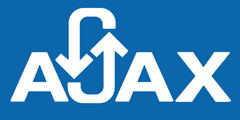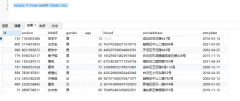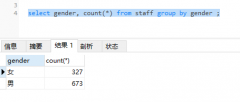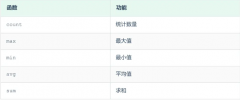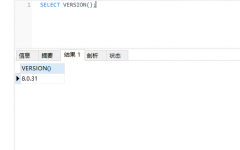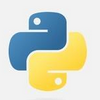T-SQL Multiple grouping(T-SQL 多重分组)
本文介绍了T-SQL 多重分组的处理方法,对大家解决问题具有一定的参考价值,需要的朋友们下面随着小编来一起学习吧!
问题描述
我有以下数据:
Product Price StartDate EndDate
Apples 4.9 2010-03-01 00:00:00.000 2010-03-01 00:00:00.000
Apples 4.9 2010-03-02 00:00:00.000 2010-03-02 00:00:00.000
Apples 2.5 2010-03-03 00:00:00.000 2010-03-03 00:00:00.000
Apples 4.9 2010-03-05 00:00:00.000 2010-03-05 00:00:00.000
Apples 4.9 2010-03-06 00:00:00.000 2010-03-06 00:00:00.000
Apples 4.9 2010-03-09 00:00:00.000 2010-03-09 00:00:00.000
Apples 2.5 2010-03-10 00:00:00.000 2010-03-10 00:00:00.000
Apples 4.9 2010-03-11 00:00:00.000 2010-03-11 00:00:00.000
Apples 4.9 2010-03-12 00:00:00.000 2010-03-12 00:00:00.000
Apples 4.9 2010-03-13 00:00:00.000 2010-03-13 00:00:00.000
Apples 4.9 2010-03-15 00:00:00.000 2010-03-15 00:00:00.000
Apples 4.9 2010-03-16 00:00:00.000 2010-03-16 00:00:00.000
想要像 product, price, min(startdate), max(startdate) 这样进行分组,但也应该在开始日期和结束日期中进行分组............如下所示
want to group like product, price, min(startdate), max(startdate) but should have grouping in start date and end date as well........ something like below
想要的结果
Apples 4.9 2010-03-01 00:00:00.000 2010-03-02 00:00:00.000
Apples 2.5 2010-03-03 00:00:00.000 2010-03-03 00:00:00.000
Apples 4.9 2010-03-05 00:00:00.000 2010-03-09 00:00:00.000
Apples 2.5 2010-03-10 00:00:00.000 2010-03-10 00:00:00.000
Apples 4.9 2010-03-11 00:00:00.000 2010-03-16 00:00:00.000
推荐答案
我的方法.
数据:
create table t ( producte varchar(50),
price money,
start_date date,
end_date date);
insert into t values
( 'apple', 4.9, '2012-01-01', '2012-01-01' ),
( 'apple', 4.9, '2012-01-02', '2012-01-02' ),
( 'apple', 8, '2012-01-04', '2012-01-04' ),
( 'cat', 5, '2012-01-01', '2012-01-01' ),
( 'cat', 6, '2012-01-02', '2012-01-02' ),
( 'cat', 6, '2012-01-03', '2012-01-03' );
查询:
with start_dates as (
select
t.producte, t.price, t.start_date, t.end_date, t.start_date as gr_date
from
t left outer join
t t1 on
t.price = t1.price and --new
t.producte = t1.producte and
t.start_date = dateadd(day,1, t1.end_date )
where t1.producte is null
union all
select
t.producte, t.price, t.start_date,t. end_date, gr_date
from
t inner join
start_dates t1 on
t.price = t1.price and --new
t.producte = t1.producte and
t.start_date = dateadd(day,1, t1.end_date )
)
select t.producte, t.price , min( t.start_date ), max( t.end_date )
from start_dates t
group by t.producte, gr_date ,t.price
结果:
| PRODUCTE | PRICE | COLUMN_2 | COLUMN_3 |
----------------------------------------------
| apple | 4.9 | 2012-01-01 | 2012-01-02 |
| apple | 8 | 2012-01-04 | 2012-01-04 |
| cat | 5 | 2012-01-01 | 2012-01-01 |
| cat | 6 | 2012-01-02 | 2012-01-03 |
说明
这是一个递归 CTE 表达式.基本查询获取每组价格的初始日期.递归查询查找具有此价格的最后一条数据.
This is a recursive CTE expression. Base query take inital dates for each group of prices. Recursive query looks for last data with this price.
这篇关于T-SQL 多重分组的文章就介绍到这了,希望我们推荐的答案对大家有所帮助,也希望大家多多支持编程学习网!
沃梦达教程
本文标题为:T-SQL 多重分组


基础教程推荐
猜你喜欢
- ORA-01830:日期格式图片在转换整个输入字符串之前结束/选择日期查询的总和 2021-01-01
- while 在触发器内循环以遍历 sql 中表的所有列 2022-01-01
- MySQL 5.7参照时间戳生成日期列 2022-01-01
- 从字符串 TSQL 中获取数字 2021-01-01
- 如何在 CakePHP 3 中实现 INSERT ON DUPLICATE KEY UPDATE aka upsert? 2021-01-01
- 使用 VBS 和注册表来确定安装了哪个版本和 32 位 2021-01-01
- 带更新的 sqlite CTE 2022-01-01
- 带有WHERE子句的LAG()函数 2022-01-01
- CHECKSUM 和 CHECKSUM_AGG:算法是什么? 2021-01-01
- MySQL根据从其他列分组的值,对两列之间的值进行求和 2022-01-01







